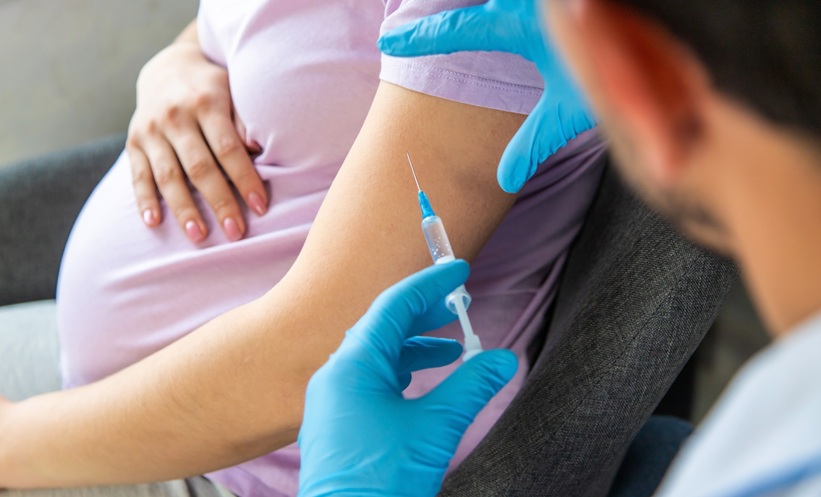“WE at the ESCMID continue to raise our game and lead the field to prevent, treat, and fight infections,” announced Annelies Zinkernagel, University Hospital Zürich, University of Zürich, Switzerland, and President of the European Society of Clinical Microbiology and Infectious Diseases (ESCMID) Global. With 11,000 members and 45,000 affiliated members through their 77 national and internal affiliated societies, ESCMID Global is a renowned congress for all to attend. This year’s Global Congress took place in the lively city of Barcelona, Spain, from 27th–30th April 2024, packed with oral sessions, workshops, meet-the-expert sessions, and poster presentations.
A vibrant musical performance started the opening ceremony on a high note. Zinkernagel subsequently spoke on the impressive growth of the society, prompting the name change from ‘ECCMID’ to ‘ESCMID Global’. She emphasised that the growing role of ESCMID Global now brings greater responsibility, and ESCMID can raise its game with two key approaches: prepare and educate.
Zinkernagel spotlighted recent initiatives to step up these efforts, such as the ‘Think Tank’ symposium, focusing on the importance and future of diagnostics in antimicrobial resistance (AMR), and the collaboration with the Global Leaders Group on AMR, forging partnerships between science and policy. An AMR event has additionally been developed, committed to accelerating political action on AMR based on a One Health approach. ESCMID will also contribute to the World Health Organization (WHO)-led World AMR Awareness Week in November; and, in the run-up to this year’s United Nations (UN) High Level Meeting on AMR at the UN General Assembly, will join forces with other organisations to convey the urgency of measures against AMR to global policy makers, demanding “ambitious commitments and concrete actions on AMR”.
In an exciting announcement, Zinkernagel then presented the new ESCMID Education Director: Mary Horgan, President of the Royal College of Physicians of Ireland, Dublin, Ireland. Horgan discussed several promising education initiatives, including the ESCMID Academy, a new online programme with a flexible, modular structure aimed to provide accessible education to the global community.
The ESCMID Global Programme Director, Jacob Moran-Gilad, Ben-Gurion University of the Negev, Beersheba, Israel, followed with a clear breakdown of this year’s congress programme, and some interesting insights. This year, 112 countries were represented in the abstract submissions, with the top three presenting countries being Spain, the USA, and Italy. The congress additionally saw a 10% increase in participants, 23% increase in abstract submissions, 14% increase in faculty members, and 17% increase in industry sessions. These statistics are testament to the expansion and content quality provided at ESCMID Global.
Finally, the ceremony came to a close with the 2024 Awards. The ESCMID Young Investigator Awards were given to five promising, young researchers: Nathan Brendish, University of Southampton, UK; Pieter de Cock, Universitair Ziekenhuis Gent, Belgium; Henning Grüll, University Hospital Cologne, Germany; Rasmus Leistner, Universitätsmedizin Berlin, Germany; and Ira Praharaj, Indian Council of Medical Research, India. Evelina Tacconelli, University of Verona, Italy, was honoured with the ESCMID Lifetime Achievements Award, in recognition of her ongoing, outstanding contributions to ESCMID’s mission.
Read on for key insights into ESCMID Global 2024, and don’t miss out on ESCMID Global 2025, taking place from April 11th–15th in Vienna, Austria.
Tackling Antimicrobial Resistance: Post-Pandemic Challenges
A RECENT study presented at the 2024 ESCMID Global Congress by Christina Yek, US National Institute of Allergy and Infectious Diseases, Bethesda, Maryland, USA, and colleagues, examined antimicrobial resistance (AMR) trends in 120 American hospitals before, during, and after the COVID-19 pandemic. Despite strides in tackling AMR since the pandemic peak, hospital-acquired AMR infections persist well above pre-pandemic levels, particularly those from gram-negative resistant organisms. This underscores the pressing necessity to address the causes and remedies for challenging-to-treat gram-negative AMR infections.
The Centres for Disease Control and Prevention (CDC) report in 2022 noted a 15% rise in hospital-related AMR infections from 2019–2020. Despite this, the underlying causes and long-term impacts are not well understood. Researchers analysed data from 120 American hospitals before (January 2018–December 2019), during (March 2020–February 2022), and after (March–December 2022) the COVID-19 pandemic, focusing on infections by six pathogens. The study aimed to update the understanding of AMR trends in American hospitals, utilising the PINC-AI database representing 20% of hospitalisations in the USA.
Throughout the pandemic, the prevalence of AMR infections surged by 6.3%, reaching 193.3 cases per 10,000 hospitalisations compared to 181.9 pre-pandemic. The spike was predominantly driven by a 32% increase in hospital-acquired resistant infections, contrasting with only a 1.4% rise in community-acquired cases. Infections caused by gram-negative pathogens, known for their resistance to multiple drugs, surged by nearly 20%, while gram-positive infections fell by 4.2%. The greatest increases were seen in hospital-acquired infections resistant to carbapenems, crucial antibiotics for severe cases. These included a 151% increase in Acinetobacter baumannii infections, a 62% rise in carbapenem-resistant Enterobacterales cases, and a 54% increase in Pseudomonas aeruginosa incidents. Conversely, community-acquired Staphylococcus aureus infections dropped by 10% during the pandemic, and 19% afterwards; a trend potentially boosted by reduced societal interactions due to pandemic restrictions.
During the pandemic, hospitals experiencing high influxes of severely ill patients with COVID-19 saw significant increases in hospital-acquired AMR infections, particularly in larger facilities with higher bed capacity. These surges likely stemmed from increased antibiotic usage and challenges in adhering to infection control protocols. Additionally, shortages of personal protective equipment may have exacerbated the spread of infections. While overall AMR rates nearly reverted to pre-pandemic levels post-pandemic, hospital-acquired infections remained 13% higher in December 2022. Gram-negative pathogen infections persisted, with hospital-acquired carbapenem-resistant organisms showing sustained elevated levels compared to pre-pandemic times. Between March–December 2022, hospital-acquired carbapenem-resistant infections surged, with Acinetobacter baumannii up by 43%, carbapenem-resistant Enterobacterales by 81%, and Pseudomonas aeruginosa by 38%.
Yek emphasised the persistence of these high rates, stressing the need for further action to address challenging gram-negative infections.
Global Measles Cases Almost Double in a Year
DESPITE substantial progress towards measles and rubella elimination over the past decade, recent data presented at the 2024 ESCMID Global Congress, held from April 27th–30th in Barcelona, Spain, revealed concerning trends in measles outbreaks worldwide. Discussions led by Patrick O’Connor, World Health Organisation (WHO) Headquarters, Geneva, Switzerland, and Hanna Nohynek, Finnish Institute for Health and Welfare, Helsinki, Finland, shed light on the current global measles situation, as well as strategies for elimination.
O’Connor’s presentation outlined a worrying trajectory, indicating that measles cases for 2024 are poised to match or exceed the provisional global total of 321,582 cases for 2023. Alarmingly, this 2023 total is almost double (88% higher) than the 2022 figure of 171,153. Furthermore, the number of countries suffering large or disruptive measles outbreaks (defined as 20 cases/million population continuously over a 12 month period) has tripled from 17 to 51 between December 2022–November 2023.
Nearly half of the 2024 cases (45%) have occurred in the WHO European Region, with Yemen, Azerbaijan, and Kyrgyzstan reporting the highest incidence rates globally. In absolute numbers, the percentage of global measles cases is dominated by low and lower-middle income countries, which have seen their proportion of all global cases increase from 80% in 2017 to 94% in 2022.
Highlighting the challenges faced in achieving and maintaining elimination, O’Connor emphasised the need for high, uniform, and equitable immunisation coverage. While vaccination coverage has been relatively high at the national level, any gaps in coverage pose a risk for outbreaks due to high infectivity of the virus. Nohynek drew attention to the impact of the COVID-19 pandemic on measles transmission, noting that reduced human contact during lockdowns led to a temporary decline in cases. However, with disruptions to vaccination programmes, many children remain unvaccinated, leading to a resurgence of cases in various regions worldwide.
Both speakers stressed the importance of leveraging successful strategies, such as those implemented in the WHO’s Americas region, where measles was successfully eliminated in 2016. They emphasised the need for robust immunisation programmes, strengthened by technical support, political will, and innovative approaches, such as the measles and rubella vaccine microarray patches, which do not require a needle and syringe.
Looking ahead, Nohynek underscored the critical role of measles vaccination in achieving the goals set forth by the Immunization Agenda 2030: preventing 50 million deaths from 2021–2030 using vaccination.
Host-Directed Therapies: A Novel Complement to Tuberculosis Treatment
NOVEL immune-enhancing therapies termed host-directed therapies (HDT) may hold the potential to target and treat drug-resistant forms of tuberculosis effectively. Findings presented by Susanna Brighenti, Karolinska Institutet, Stockholm, Sweden, at the 2024 ESCMID Global Congress, revealed how newly identified HDTs were able to reduce Mycobacterium tuberculosis growth by 50–70% in immune cells, even without antibiotic treatment.
Tuberculosis is a leading cause of illness and death globally, accounting for an estimated 7.5 million new diagnoses and 1.3 million deaths in 2022, of which 160,000 deaths are estimated to be a consequence of multi-drug-resistant tuberculosis. Mycobacterium tuberculosis’ extensive ability to manipulate host immune responses and subvert intrinsic antimicrobial effector functions of immune cells, in conjunction with frequent mutations conferring antibiotic resistance, underscores the need for novel treatments tackling tuberculosis.
Through the targeted restoration of multiple immune pathways or induction of antimicrobial activities in infected cells, HDTs are designed to strengthen immune responses to treat infections. Brighenti showcased how several newly identified histone deacetylase inhibitors can be used to regulate the transcription of genes to enhance the expression of proteins associated with antibacterial host defence. Rather than serving as an independent therapy, HDTs could complement the activity, and protect the function, of existing antibiotics by operating as adjuvants, possibly reducing antibiotic dose and treatment length.
Immunotherapies that complement pre-existing treatments for cancer, asthma/allergy, and autoimmunity have already contributed to significant improvements in patient care. Readily available and approved HDT therapeutics, such as glucocorticoid treatment or cytokine neutralisation therapies, may represent an initial step and short-term option for patients with severe multi-drug-resistant forms of tuberculosis, or those with poor prognosis.
Brighenti emphasised the ever-growing call for personalised medicine, and concluded that the different sub-groups of tuberculosis mean that “tailored treatments that are optimised to individual patient needs” will be part of future tuberculosis treatment.
Variations by Age and Sex in Antimicrobial Resistance
LEVELS of antimicrobial resistance in bloodstream infections vary by age and sex, according to research presented by Gwen Knight, London School of Hygiene and Tropical Medicine, UK, at the 2024 ESCMID Global Congress. Available data on how prevalence of antimicrobial resistance varies with age and sex for different bacterial species and resistance phenotypes are lacking; however, better understanding of these associations would enable intervention targeting.
This study used routine surveillance data from 29 European countries, collected by the European Antimicrobial Resistance Surveillance Network (EARS-NET), and aimed to characterise the burden of antimicrobial resistance for bloodstream infections. A total of 6,862,577 susceptibility results between 2015–2019 were included, and resistance trends by age and sex were characterised.
The team noted substantial variation in antimicrobial resistance prevalence by age, and identified four main association forms: u-shaped with monotonic increase with age after infancy; constant; n-shaped with resistance peaking at intermediate ages; and monotonic decline with age. They further saw low association between sex and resistance, except for Klebsiella pneumoniae and Escherichia coli, as well as Acinetobacter spp. at younger ages, with males more likely to have a resistant infection.
Data also showed more variation in trends within an antibiotic family than a bacterial species. For example, there was a clear increase in resistance prevalence by age for methicillin-resistant Staphylococcus aureus, whereas within Pseudomonas aeruginosa, researchers noted a peak to several antibiotics at around 30 years of age.
Knight stated: “Most experts assume that resistance prevalence would increase with age due to cumulative antibiotic exposure effects and contact with healthcare settings, but it was not the case with all pathogens.” She also noted that, surprisingly, females had lower prevalence of resistant bloodstream infections, despite having more risk factors, including urinary tract infection incidence and childbirth.
The team concluded that the prevalence of antimicrobial resistance in bloodstream infection varies by age and sex, and that patterns of association vary widely with resistance phenotype and bacterial species. These data reveal important gaps in our understanding of antimicrobial resistance drivers, and will affect intervention targeting.
Antibiotic Use in Patients with COVID-19 Offers No Benefit
IMPORTANT findings presented at this year’s ESCMID Global Congress shed light on the risks associated with antibiotic treatment for adults hospitalised with moderate COVID-19. Despite antibiotics being administered to over 40% of patients, a study led by Anette Friedrichs, University Hospital Schleswig-Holstein, Kiel, Germany, reveals a concerning trend of clinical deterioration among these individuals.
The study, conducted between March 2020–May 2023, analysed data from 1,317 hospitalised adults (median age: 59 years; 38% female) with confirmed SARS-CoV-2 infection. Researchers identified 1,149 patients with moderate disease, of whom 467 (41%) were treated with antibiotics commonly used for respiratory infections, such as β-lactams, macrolides, or moxifloxacin. Additionally, 70% of the 168 patients classified as having severe disease received antibiotic treatment. The team found that older, male patients with greater disease severity, a higher burden of comorbidities, and no prior COVID-19 vaccination had a significantly greater likelihood of being treated with antibiotics.
The researchers used the World Health Organization (WHO) Clinical Progression Scale to track patient’s trajectories over the course of their illness, incorporating factors such as hospital admission, O2 requirement, ventilator support, admission to intensive care unit, and organ replacement therapy. The score was calculated for each patient at initial consultation, and again 14 days later to see whether the score had improved, remained stable, or worsened.
Microbiological investigations identified a mere 11 patients with bacterial superinfection, raising questions about the efficacy of widespread antibiotic use. Importantly, the study found that patients treated with antibiotics faced a five-fold greater risk of clinical deterioration after 14 days compared to those not treated with antibiotics. Furthermore, the team found that being aged ≥65 years tripled the likelihood of COVID-19 deterioration, compared to those aged 18–50 years; and younger, female, vaccinated patients showed significantly better clinical improvement.
The study, while observational and limited to patients in Germany, highlighted the critical need for rational antibiotic use, especially during viral pandemics like COVID-19. Friedrichs emphasised that antibiotics should only be administered for suspected or confirmed bacterial co- or superinfection, cautioning against indiscriminate prescribing. Antibiotic stewardship programmes must be strengthened to ensure that antibiotics are reserved for these cases, and diagnostic tests should always be used to confirm bacterial infection.
Making Transfusion-Transmitted Malaria in Europe a Thing of the Past
IN THE BATTLE against transfusion-transmitted malaria (TTM) in Europe, Sophie Le Cam, representing the French transfusion blood service (Etablissement Français du Sang [EFS]), presented a comprehensive strategy at the 2024 ESCMID Global Congress, in Barcelona, Spain. Despite commendable progress, with only 10 reported cases of TTM in the last two decades, existing serological tests are insufficient to completely eradicate the risk.
TTM occurs when a recipient receives infected blood or its components, leading to accidental Plasmodium infection. Even minimal parasite presence can cause infection, posing a significant threat, especially in non-endemic regions where immunity is scarce. Le Cam highlighted the dire consequences of TTM, particularly for immunocompromised patients, and those unexposed to malaria.
Europe mandates precautionary measures, such as deferral periods for donors returning from endemic regions. However, existing diagnostic methods lack the necessary sensitivity and specificity. Microscopic examination, the gold standard for malaria diagnosis, is not feasible for blood bank operations, while serologic tests fall short of expectations.
A critical challenge lies in detecting infections in donors with immune tolerance, who may harbour low parasite densities for extended periods. Le Cam advocated for advanced molecular methods to enhance sensitivity. Yet, cost remains a barrier to widespread adoption.
“The key to transfusion security remains the deferral period after the return of donors from endemic countries, but we really need to develop new testing strategies. The parasite inactivation of blood using new technologies that are able to selectively inactivate pathogens without damaging cells or plasma could also be a good option, but the technology is not completely reliable for packed red blood cells, and is very expensive,” explained Le Cam. She suggested combining various strategies, including molecular testing, to safeguard blood transfusions effectively. In essence, eliminating TTM in Europe demands a concerted effort. While donor deferral remains pivotal, investment in innovative diagnostic tools and technologies is equally crucial.
CRISPR for Antimicrobial Resistance: Too Good to Be True?
CRISPR has been highlighted in recent years as a promising measure against antimicrobial resistance (AMR), but is it the answer to this growing health pandemic? Recent research by Ibrahim Bitar, Department of Microbiology, Faculty of Medicine in Plzeň, Charles University, Prague, Czechia, presented at this year’s ESCMID Global Congress, underscores the challenges of harnessing CRISPR to combat AMR.
Clustered regularly interspaced short palindromic repeats, better known as CRISPRs, are repetitive lengths of DNA that are separated by fragments called spacers. Spacers account for adaptive immunity in prokaryotes, originating from an identical heterologous nucleic acid sequence that previously invaded the host bacterium. The CRISPR-Cas system employs a short CRISPR RNA (crRNA)-Cas effector complex. Guide crRNAs contain spacers which enable identification of repeat infectious agents with matching genetic material. This effector complex base pairs to the complementary strand of the invasive RNA, and induces sequence-specific cleavage, inhibiting the replication of pathogenic genetic material and, therefore, the proliferation of invasive species.
The hypothetical use of CRISPR in the fight against AMR hinges, therefore, on harnessing Cas proteins belonging to the CRISPR-Cas system, and delivering them via vectors such as bacteriophages or conjugative bacterial strains, to selectively target and remove AMR genes.
Likewise, it may be used to develop antimicrobial agents by introducing self-targeting crRNAs that produce double-stranded breaks within the bacterial DNA.
While taking advantage of this system boasts great promise, there are some potential obstacles to its utilisation in clinical practice. The CRISPR-Cas system, as with most biological systems, is regulated by several, highly complex pathways that are yet to be fully characterised. Equally, as the mechanism relies on horizontal gene transfer via conjugation, a process also regulated by numerous highly complex pathways, there is no guarantee that the percentage of successful delivery within a bacterial population will be sufficient for successful resensitisation to antibiotics.
Furthermore, bacteria encode anti-CRISPR systems that serve to repair any damage that arises from CRISPR-Cas activity. For example, the gene acr, which aids in the inhibition of horizontal gene transfer, clusters alongside antagonists that similarly contribute to host defence, producing defence islands. As a result, resensitisation efforts may be impeded by innate defence systems.
Commenting on the challenges of introducing CRISPR-Cas-mediated resensitisation, Bitar wrote: “These regulated pathways must be studied in depth in order to avoid selective pressure favouring anti-CRISPR systems activation, hence prevalence of resistance in a more aggressive manner”.
Artificial Intelligence Versus Doctors: Fact Meets Practice
AN ARTIFICIAL intelligence (AI) chatbot proficiently answered factual queries, sometimes surpassing doctors; however, it struggled with applying theory to clinical situations, found a study conducted by Andrea De Vito, University of Sassari, Italy, and colleagues. They cautioned against using the technology for patient treatment decisions, and highlighted ChatGPT’s accessibility and potential for medical advice. The study aimed to evaluate ChatGPT’s accuracy in antibiotic treatment guidance compared to medical professionals.
Experts designed 72 questions across various formats to assess knowledge in treating specific infections. The questions covered true/false statements, open-ended inquiries, and clinical cases with antibiograms. They explored scenarios like necrotising pancreatitis and ruptured aortic aneurysm, along with challenges and therapeutic strategies for infections like those caused by multidrug-resistant Acinetobacter baumannii. Clinical cases provided detailed patient scenarios, including medical history and bacterial sensitivity, requiring identification of resistance mechanisms and appropriate treatment options.
The study, presented at the 2024 ESCMID Global Congress, administered questions to four senior residents, four infectious disease specialists, and two versions of ChatGPT-4. Responses, totalling 720, were evaluated by blinded antibiotic treatment experts for accuracy and appropriateness. All groups performed similarly on true/false queries, with around 70% accuracy. ChatGPT-4 excelled in open-ended responses but slightly lagged in clinical case accuracy and antibiotic selection compared to doctors. It favoured older antibiotics over newer, potentially more suitable options due to challenges accessing and comprehending complex, updated medical data and guidelines, explained Vito.
He emphasised that understanding ChatGPT’s response generation process is vital, as it constructs sentences based on context rather than comprehension, potentially hindering its accuracy with the latest medical guidelines. Both ChatGPT-4 versions tended towards longer treatment durations than necessary. While proficient in answering factual queries, ChatGPT struggled with interpretation and application, especially with new treatments, compared to doctors. The team warned against relying on ChatGPT for clinical decisions, highlighting its limitations and stressing the importance of professional judgment. While AI advances offer promise, challenges like accuracy, reliability, and patient privacy persist, delaying chatbot integration into medical practice. Public reliance on chatbots for infection treatment advice is discouraged.
Vito highlighted that, while ChatGPT excels with factual questions, it lacks the ability to gather crucial diagnostic information from patients or conduct physical exams, emphasising that AI tools should not substitute for medical professionals.
Surveillance Breakthrough: Tracking Global Antimicrobial Resistance Prevalence
ANTIMICROBIAL resistance (AMR) is on the rise globally, according to new estimates presented at the 2024 ESCMID Global Congress in Barcelona, Spain. AMR poses a significant threat to global health; however, traditional surveillance methods struggle to provide comprehensive data due to limited resources and diagnostic capacity in many countries, causing the true scale of the problem to remain unknown.
A research team led by Sneha Kotian, Amsterdam Institute for Global Health & Development, The Netherlands, has estimated AMR levels in countries lacking data with a novel approach using sociodemographic and health-related drivers of AMR, greatly improving the global coverage of AMR prevalence rates. New estimates have revealed that AMR prevalence of World Health Organization (WHO) priority pathogens is expected to be substantial in countries lacking current data.
The study utilised data from 2004–2021, sourced from the Vivli AMR Register and ResistanceMap, for nine key gram-negative pathogen-antibiotic combinations. Sociodemographic and health-related factors were extracted from the WHO Health Inequality Data Repository and the Global Data Lab. Advanced statistical analyses, including a stacked ensemble model comprising various regression models, were employed to elucidate the relationship between indirect predictors and AMR rates.
This approach increased global coverage of AMR prevalence rates from 24% to 85%. It indicated that resistance to third-generation cephalosporins (one of the most widely used antibiotic classes) in Escherichia coli, and resistance to carbapenems (antibiotics of last resort) in Acinetobacter baumannii, are both on the rise; with a notably sharp increase observed in Sub-Saharan Africa and South Asia between 2004–2021.
Kotian explained: “Understanding leading pathogen-drug combinations contributing to AMR in specific regions is crucial to making informed decisions about how to prioritise surveillance activities, and underscores the urgent need for collaborative efforts to address and mitigate this escalating challenge in global public health.”
This study demonstrates the effectiveness of sociodemographic and health-related indirect predictors in supplementing national surveillance data for estimating AMR prevalence. These findings serve as a foundation for further refinement and improvement of predictive models.
However, the model performed more effectively for certain pathogen-antibiotic combinations over others; thus, future steps will involve refining the approach for these combinations. The researchers also noted that, given the approach uses laboratory-based surveillance which has associated bias, the results should be interpreted as an approximation of the true prevalence in a country.
Drastic Disparities in Global Coverage of Human Papillomavirus Vaccination
WORLD Health Organization (WHO) Dashboard data have revealed that, despite the rollout of human papillomavirus (HPV) vaccination, contributing to a significant reduction in cervical cancer and HPV-related disease incidence and mortality worldwide, there exists a dramatic disparity in global coverage.
The advent of safe and efficacious HPV vaccines at the beginning of the 21st century prompted the WHO to call for an ambitious 30% reduction in cervical cancer incidence and mortality by 2030. To achieve this target, each country must aim to vaccinate 90% of females by age 15 years, administer high precision screening testing to at least 70% of females by age 35, and ensure that 90% of all females requiring treatment receive it. However, while evidence accumulates in support of HPV vaccination, there remains wide variation in coverage between high-income countries and low- and middle-income countries.
Data presented by Suzanne Garland, University of Melbourne, Australia, at the 2024 ESCMID Congress, demonstrated that 137 countries have a total/partial HPV national programme, with average vaccine coverage highest at 60% in WHO’s European region, lowest at 31% in the Americas Region, and a global average coverage of 44%. Australia has the world’s leading HPV vaccine rollout, with coverage in males and females of 15 years of age in 2021 at 84.4% and 86.2%, respectively. The extensive rollout of HPV vaccines in Australia has led to a 92% reduction in the prevalence of HPV type, and the national public health programme aims to be the first to eliminate cervical cancer.
Garland emphasised that the main barriers for countries to improve coverage are competing vaccines, price and delivery, interruptions from global events, political will, and the number of doses required. In spite of these challenges, Malaysia represents a low- or middle-income country that was able to ensure high coverage.
Focus should not be diverted from other cervical cancer and HPV-related disease prevention measures, including condom use, sex education, male circumcision, cervical disease screening, and tobacco control strategies. Nevertheless, Garland concluded that there is strong evidence of HPV vaccination effectiveness against cervical cancer, and stressed: “Scaling up vaccine access and coverage globally is critical to reduce inequities between and within countries.”







